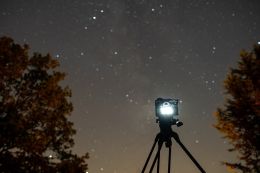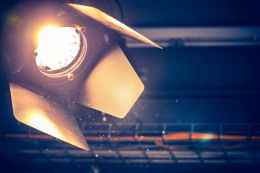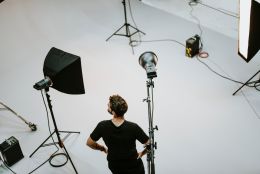Picture lighting: How to do it right?
Exposure for photos drives many beginners to the brink of despair. Maybe you do too, because somehow the results never turn out the way you would like them to.
Before we get into the topic of picture lighting here, let's first clarify what "photo exposure" actually means. Image lighting is influenced by a wide variety of factors. Among other things, the intensity of the lighting and the brightness of the subject in relation to the sensitivity of the digital camera play a role here. The combination of apertures and exposure time can control the picture lighting.

Correct picture lighting with the histogram
You have probably already discovered the so-called histogram and perhaps wondered what to do with it. With the histogram, which is usually shown on the display of your camera when you look at a photo, you have the possibility to check the picture lighting immediately. The histogram is always displayed as a curve and thus indicates how many light and dark portions an image has and how much contrast.

How to recognise the right picture lighting
But how can you actually tell that the picture lighting is right for your shots? Here are a few points by which you can quickly determine whether the picture lighting is right.
- In the histogram of your camera, there are no particularly high bars on either the right or the left edge. If you want to be on the safe side, take a look at the light warning.
- If the histogram shows a certain rightward bias, then your shot has a lot of bright areas.
- If the histogram is left-heavy, the image has a lot of dark areas.
- If the image has a pronounced light-dark contrast, then the histogram extends over the entire bandwidth, so to speak.
In between, of course, there is a certain margin where the histogram neither bumps to the right nor to the left. When it comes to image lighting, it is not least your personal taste that decides. Some people prefer darker images, while others prefer brighter images. In principle, it is advisable to tend towards the brighter variant when it comes to image lighting, as the quality of the image is better with brighter tones.
This is how you can easily correct the exposure
- Automatic and semi-automatic programmes
When you take photos using the automatic programme of your camera, it is not always possible to intervene in the picture lighting. Whether this is the case depends on the camera model. You can easily test whether it is possible with your camera by trying the following:

Press the +/- button on your digital camera and turn the setting wheel. See in which direction you have to turn to make the picture brighter or to darken the picture. After taking the picture, however, do not forget to turn the dial back to zero.
- Manual adjustment of the camera
Even if you make the camera settings manually, the variant with the +/- button works.
- Correct images that are too bright
When it comes to picture lighting, it is not always a lack of light that is the problem. It often happens that pictures are much too bright. In this case we speak of overexposure. If a picture is overexposed, you should shorten the exposure time. To do this, simply turn the wheel for the exposure settings. Through the viewfinder you will then see a light scale whose display then moves into the minus range.
Another way to regulate the picture lighting is to turn down the ISO.
- Lighten images that are too dark
The opposite of overexposed photos are underexposed photos. This can also occur. If your photo is underexposed, then proceed as described for the correction of overexposed photos. Here, however, you do not move the light balance to the minus area, but to the plus area.

You can also improve the picture lighting by turning up the ISO.
Do you have any questions about image lighting? Then please feel free to contact us, we at Fotoalben-Discount look forward to hearing from you.





